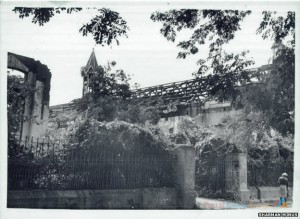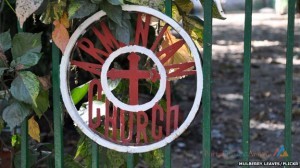Informativo ARMÊNIA 2014
Ano XIV – nº 15
Setembro de 2014
Para leitura das edições anteriores do Informativo Armênia, clique aqui.
NOTÍCIAS E INGREDIENTES
Os “ingredientes” que fazem parte das notícias deste mês, você vai saboreá-los, lendo como vão os preparativos para o Centenário do Genocídio Armênio, a Moção aprovada pela Câmara Municipal de São Paulo em prol do “reconhecimento”… , relembrando os discursos de Hirant Sanazar, aguardando as histórias do jovem Sarkis, saber como vai o Turismo na Armênia, ouvir e aprender a receita do “Ghapamá” com o Coral Sinfônico KOHAR, inteirar-se do evento de ordenação episcopal do Padre e Prof. Levon Zekyian, conhecer a Igreja Apostólica Armênia de Myanmar, emocionar-se com os agradecimentos do KOHAR aos amigos e fãs do saudoso Maestro Sebouh Apkarian.
Referindo-me a agradecimentos, cito, pelas colaborações a esta edição, os nomes de Janette Kolanian Sanazar, pelo envio do vídeo da entrevista de seu marido, quando prefeito; Marine Melik. Trentin, pelo vídeo do “Ghapamá”; ao convite de ordenação episcopal do P. L. Zekyian, e à Margarida Katchborian Fletcher, pelos “News” dos armênios
Boa leitura,
Sossi Amiralian
COMITÊ DO CENTENÁRIO DO GENOCÍDIO
A 2ª Reunião do Comitê ocorreu no dia 10 de setembro, a partir das 19,30hs., no Consulado da Armênia, à Alameda Santos, 1496, 11o andar, presidida por Sua Exa. Dr. Ashot Galoyan , Embaixador da Armênia para o Brasil. Estavam presentes a Cônsul Honorária da Armênia em São Paulo, a Sra. Hilda Dirouhy Burmayan, o Primaz Der Narek Berberian e demais autoridades eclesiásticas, bem como representantes de todas as entidades e organizações da Coletividade Armênia de São Paulo.
João Carlos Boyadjian, secretário do Comitê, fez uma apresentação da agenda, delineando as metas, os planos de trabalho, a formação
de grupos, a frequência da realização das reuniões, enfocando a participação de todas as comunidades e centralização de todas as ações na Embaixada da Armênia. Em suma, a reunião tratou da definição do quê precisa ser feito, como, quando e onde, visando terminar todas as ações do “Centenário” até abril de 1915.
APOIO E RECONHECIMENTO DO GENOCIDIO ARMÊNIO
– MOÇÃO –
Com imensa satisfação, comunicamos a aprovação pela Câmara Municipal de São Paulo, do requerimento de “Moção em Apoio e Reconhecimento pelo Brasil do Genocídio de 1915/1923 ao Povo Armênio” apresentado pelo Vereador PAULO FRANGE à sessão do Plenário em 19 de agosto deste ano, e aprovado em 2 de setembro passado. Este acontecimento deveu-se a um encontro com o ilustre Vereador em Osasco, durante o almoço de confraternização e agradecimentos oferecido pela Família Sanazar, na sede do Diário da Região, de direção do Dr. Vrejhi Sanazar. Paulo Frange foi o autor do projeto de lei para a colocação da placa Hirant Sanazar sobre a Ponte Jaguaré, como homenagem ao primeiro prefeito de Osasco. Ele nos atendeu com interesse e curiosidade pela Questão Armênia, ouvindo a proposta do advogado Dr. Elias Katudjian, em pleitear junto ao Governo Federal, o reconhecimento do genocídio armênio, bem como pelo subsídio por mim sugerido, pela entrega do livreto VEREDITO – de teor jurídico e histórico, contendo a decisão, a nosso favor, do Tribunal Permanente dos Povos.
Registramos aqui nosso profundo agradecimento a Paulo Frange, por mais uma de suas vitórias conquistadas, e um passo a mais, em prol dos Armênios do Brasil.
ENTREVISTA COM HIRANT SANAZAR – (Em memória)
Primeiro Prefeito de Osasco sendo entrevistado em 13 de julho de 2012
SARKIS SARKISSIAN ACABA DE VOLTAR DE VENEZA
O jovem Sarkis chegou a São Paulo, com uma bagagem revigorada de cultura armênia, adquirida no Curso Intensivo de Língua, Literatura e Cultura Armênia da Universidade Ca’Foscari de Veneza. Envolvido em Assuntos Armênios, já há algum tempo, e tendo dado Cursos Extracurriculares no Curso de Armênio da USP, certamente irá agora compartilhar com muitos, suas vivências e conhecimentos: é o que estamos esperando. Basta dar um exemplo do que visitou por lá: o Mosteiro dos Padres Mekhitaristas da Ilha de São Lázaro… Estudos que fez com o Pe.Boghos Levon Zekyian , hoje Bispo nomeado pelo Papa Francisco… e amanhã, dia 13 de setembro, ordenado em Istanbul, pelo Patriarca de Cilícia dos Armênios Católicos, S. Nerses Bedros XIX. Então, Sarkis, bem-vindo e mãos à obra!
A INDÚSTRIA DE TURISMO NA ARMÊNIA TEM FALTA DE ESPECIALISTAS
(ARKA News Agency – Yerevan 11/09/2014)
“Há uma grande falta de especialistas na Indústria de Turismo na Armênia. Este é o seu maior problema”, declarou Robert Minasyan, Diretor do Instituto de Turismo da Armênia, do VATEL International Restaurant e Hotel Business School, na 5a feira, em uma entrevista coletiva.
“Nosso país tem tudo para o desenvolvimento do turismo, mas temos poucos especialistas nesta área”, disse ele.
Minasyan disse ainda que “em geral, não há interesse das pessoas por esta área de trabalho aqui, o que gera impactos negativos sobre o desenvolvimento do turismo no país.”
“Alguns processos começaram na indústria do turismo da Armênia, nos últimos 5-7 anos, e alguma coisa já foi feita, mas o problema de especialistas permanece sem solução. É importante compreender que a chegada de cada turista pode criar três ou quatro empregos”.
Acrescentou que os esforços devem ser intensificados para atrair turistas russos para a Armênia, uma vez que são mais desejáveis em termos de aspecto financeiro. E que “a Armênia é um destino popular para os povos russo, alemão, japonês e chinês”, mas não foram fornecidos detalhes estatísticos.
De acordo com o Instituto Nacional de Estatística, 495.967 turistas visitaram a Armênia, no primeiro semestre deste ano: 17,3% a mais, em comparação ao primeiro semestre de 2013.
(Traduzido por Sossi Amiralian)
CANÇÃO, CULINÁRIA E SAUDADES
Se você quiser a receita do prato natalino GHAPAMÁ, típico da Armênia, ouça e cante com o Coral KOHAR
“Hey, Djan, ghapamá,
anoush hodov, ghapamá,
Anush gatov ghapamá,
Hey, djan, ghapamá,
Hey, djan, djan….”
Diz a amiga Marine M. Trentin que, além do leite no arroz, misturam-se passas, damascos e mel…
A canção é deliciosa de se ouvir e um convite para saborear o “Ghapamá”, com aroma, ritmo e sorrisos. Folclore puro!
Impossível deixar de relembrar, com carinho, a regência do imortal Maestro Sebouh Apkarian.
Sossi Amiralian
ORDENAÇÃO EPISCOPAL DO PADRE LEVON ZEKYAN
(ODZUM)
Hoje, sábado, dia 13 de setembro, às 16.30 hs., será realizada a cerimônia de ordenação episcopal do Padre Boghos Levon Zekyian, na Igreja de São Salvador em Istambul (Gaghatiá Surp Prguitch Yegueghetsi) no bairro de Galata.
A ordenação será oficiada pelo Catolicos Patriarca de Cilícia dos Católicos Armênios, S. Nerses Bedros XIX.
O Padre Levon foi nomeado por SS. Papa Francisco para Administrador Apostólico dos Católicos Armênios da Turquia. Amanhã, dia 14, dia da Exaltação da Santa Cruz (Khatchveradzi Ghiragui), ele celebrará sua primeira missa como Arcebispo, às 11 hs., na Igreja de Santa Maria (Surp
Asdvadzadzin) em Beyoglu, Pera.
Após a missa, haverá uma recepção aos convidados.
The last Armenians of Myanmar
Fonte: http://www.bbc.com/news/magazine-28867884
One of the oldest churches in Myanmar, also known as Burma, is struggling to keep going – its congregation only occasionally reaches double figures. But the opening up of the country to outside investment and tourism is offering new hope.
Reverend John Felix, priest at the Armenian church in Yangon, also known as Rangoon, can’t speak Armenian – but then neither can his congregation. Not that there is much of a congregation these days – just seven, myself included, on a recent Sunday morning.
The 150-year-old church enjoys an imposing location, at a street corner in downtown Yangon. It’s a beautiful building, a patch of calm in a bustling city. The Armenian Orthodox church of St John the Baptist – standing, suitably, on Merchant Street – is almost all that’s left of what was one of the city’s main trading communities.
“To judge from church records, there were once a few hundred Armenian families in Burma but the last ‘full’ Armenian died last year. Across the country, there are no more than 10 or 20 families who are part Armenian – and just a handful still come to the church,” says Felix.
 Rachel Minus, in her mid-30s, can sing in Armenian – and does with reverence – but can’t speak the language. She attends on Sundays with her father, who also tolls the church bells.
Rachel Minus, in her mid-30s, can sing in Armenian – and does with reverence – but can’t speak the language. She attends on Sundays with her father, who also tolls the church bells.
“My grandfather was full Armenian and our family name is derived from the Armenian surname of Minossian. We’re part Armenian and this church and its services mean a lot to us,” she says.
In the early 17th Century, large numbers of Armenians fled the Ottoman Empire and settled in Isfahan in what’s now Iran. From there, many travelled on in later years to form a commercial network which stretched from Amsterdam to Manila.
Their influence in the British Raj reached its peak in the late 19th Century, when census records suggest that about 1,300 Armenians were living principally in Calcutta, Dhaka and Rangoon.
Their closeness to the Burmese royal court gave them a particularly privileged status in Rangoon’s trading community. The land on which the church stands is said to have been presented to the Armenians by Burma’s king.
The region’s most prestigious hotels – including The Strand a short walk from the church in downtown Yangon and the even more famous Raffles in Singapore – were established by Armenians.
But bit-by-bit over the past century many in these small Armenian outposts, worried by political and economic instability, have looked for a new home – with Australia the most favoured destination.
 John Felix – whose bishop is based thousands of miles away in Sydney – is a welcoming and enthusiastic clergyman, proud of his church and unbowed by the difficulties of keeping going as the congregation steadily shrinks.
John Felix – whose bishop is based thousands of miles away in Sydney – is a welcoming and enthusiastic clergyman, proud of his church and unbowed by the difficulties of keeping going as the congregation steadily shrinks.
Felix took over as priest of the Yangon church from his father, who died three years ago after more than 30 years as minister. Like his father, he was initially ordained into the Anglican communion and then re-ordained as an Orthodox priest.
He was born in Myanmar, speaks Burmese – but is of south Indian origin, and so has his roots in another of the migrant communities which once made Yangon such a thriving commercial hub.
He worries about the upkeep of the building. “There are three spots in the roof where the water’s coming in, and we need to get them fixed.”
But this is by any standards a neat, well-kept church, and an important part of Yangon’s rich colonial-era architectural heritage which is increasingly attracting tourists and international attention.
Sunday worship has all the hallmarks of an Orthodox church service – icons, incense and, in spite of the slender attendance, entrancing hymn singing. Felix doesn’t wear the ornate priestly robes in which his father once conducted ceremonies, but he remains firmly part of the Orthodox tradition.
That Orthodox lineage could be key to the survival of the church – as a spiritual home to all the various forms of Orthodox Christianity as well as a last vestige of an almost-gone Armenian community.
Already diplomats, business visitors and tourists from a range of Orthodox countries and churches – Russian, Greek, Serbian – occasionally swell the numbers at St John the Baptist, the only Orthodox church in Myanmar’s biggest city.
A new worshipper here, Ramona Tarta, is Romanian, a globetrotting business woman, publisher and events organiser who has lived in Yangon for the last few months.
“My faith is very important to me. Wherever I am in the world, I seek out an Orthodox church. But I was about to give up on Yangon. I thought it was the only city I’d ever lived in which had no Orthodox place of worship,” she complains.
She chanced across the Armenian church when driving past, and believes that with a little promotion, this historic building – and the tradition to which it bears testimony – could have a more secure future.
If the church reached out more actively to all strands of Orthodoxy then, she argues, it could attract more worshippers and find a renewed purpose. She’s set up a Facebook page for the church as a first step towards getting more attention.
Myanmar has had more than its share of troubles and upheaval over the last century. The country was occupied by the Japanese during World War Two, and suffered greater privation and damage to its infrastructure than almost anywhere else in the region.
 Many Armenians were among those who embarked on the arduous wartime trek north through jungle and forest to the relative safety of British India – a memorial in the church lists the 13 members of one Armenian family who died during the journey.
Many Armenians were among those who embarked on the arduous wartime trek north through jungle and forest to the relative safety of British India – a memorial in the church lists the 13 members of one Armenian family who died during the journey.
Burma gained independence from Britain in 1948, several months after India and Pakistan. Within a few years, it had a military-backed government which made little effort to develop commercial links beyond the country’s borders. The army’s violent suppression in 1988 of the democracy movement further heightened the country’s international isolation.
Over the past few years, Myanmar has been edging towards greater democracy, and has started to open its doors more widely to foreign business and investment. What was one of Asia’s most international cities is again starting to develop a more global aspect.
And a church which has its roots in an earlier era of international commerce may find fresh succour from a new bout of globalisation.




